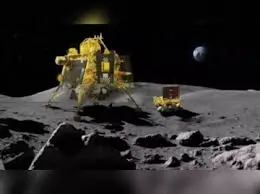Chandrayaan-5 mission: India, Japan to enter design phase

India and Japan have officially entered the design phase for their ambitious Chandrayaan-5 mission, marking a significant milestone in the ongoing space collaboration between the two nations. This next chapter in lunar exploration aims to build on the successes of Chandrayaan-1 and Chandrayaan-3, as India strengthens its position in the global space race.
Strengthening India-Japan Space Cooperation
The design phase announcement came after detailed discussions between the Indian Space Research Organisation (ISRO) and the Japan Aerospace Exploration Agency (JAXA). Both agencies have expressed strong commitment toward pooling their expertise and resources to develop advanced technologies that will enable a successful mission to the Moon.
This partnership leverages India’s robust lunar exploration experience and Japan’s cutting-edge robotic technology and scientific instruments. The collaboration aims to explore unexplored lunar regions, conduct detailed scientific experiments, and possibly pave the way for future crewed lunar missions.
What to Expect from Chandrayaan-5
While technical details are still being finalized, Chandrayaan-5 is expected to include sophisticated landers and rovers equipped with advanced payloads. These instruments will focus on surface composition analysis, lunar geology, and the search for water ice in shadowed craters — crucial for future sustainable lunar bases.
Chandrayaan-5 could also test new technologies such as autonomous navigation systems, enhanced communication modules, and innovative power solutions, contributing valuable data to both countries’ space programs.
India’s Growing Lunar Ambitions
India’s lunar exploration efforts began with Chandrayaan-1 in 2008, which famously discovered water molecules on the Moon’s surface. The recent Chandrayaan-3 mission demonstrated India’s mastery in soft-landing on the lunar surface, an achievement that positioned India among a select group of countries capable of such complex maneuvers.
Chandrayaan-5 represents the next step in ISRO’s long-term vision to establish a sustained presence on the Moon, aligned with international efforts to build lunar habitats and mine lunar resources.
Japan’s Role and Contribution
Japan’s participation in Chandrayaan-5 highlights JAXA’s growing interest in lunar exploration, particularly robotic missions that support scientific research and technology demonstration. Japan plans to contribute advanced rover designs and scientific instruments, benefiting from its experience with lunar missions and asteroid explorations.
The collaboration also enhances Japan’s strategic role in international space exploration, complementing other partnerships such as with NASA and ESA.
Timeline and Next Steps
Currently, the focus is on the conceptual design and feasibility studies, with detailed engineering development expected to begin soon. Both ISRO and JAXA aim to finalize the mission plan within the next 12-18 months before moving toward hardware manufacturing and integration.
If successful, Chandrayaan-5 could launch in the late 2020s, continuing the wave of lunar missions that will shape humanity’s understanding and utilization of the Moon.






